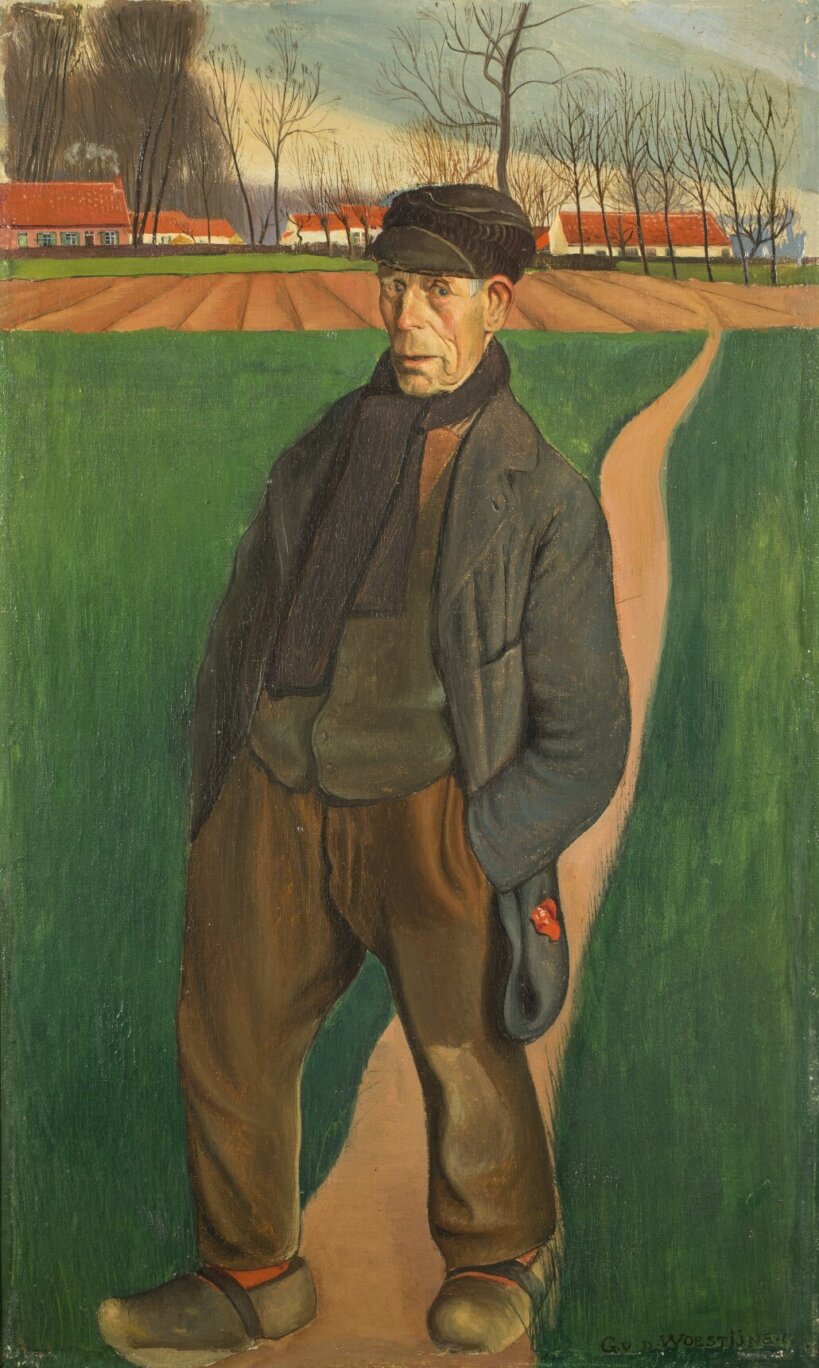The Museum of Fine Arts Ghent (MSK) exhibited all the works of Gustave Van de Woestyne (1881-1947) from the museum's collection. The driving force behind this presentation are a number of recent donations, which considerably strengthen the MSK’s collection of works by this local artist.
The core of the Gustave Van de Woestyne collection
The artist Gustave Van de Woestyne has been associated with the Ghent museum for decades. As early as 1913, the museum acquired the Portrait of Prudence De Schepper (1910), the artist's wife. In the course of the 20th century paintings were added as Farmer (or Evening; 1910), Farmer's wife (1913), Hospitality for strangers (1920), Christ in the Desert (1939), and - in 1991 - Fugue (1925). In this way, by the beginning of the 21st century the museum possessed key works from the most significant phases of the artist's career. After 2000, a great deal of additional attention was given to Van de Woestynes' graphic oeuvre, adding a.o. preparatory drawings for Streuvel's retranslation of the Middle Dutch epic Van den vos Reynaerde, but also the probably best-known portrait drawing Gustave made of his brother, the poet-writer-critic Karel van de Woestijne (1910).
The important recent donations
Thanks to the donations made in recent years, the museum is now able to present an even broader picture of the artist's oeuvre and even to illustrate the first phase of his career. For example, the museum recently acquired the earliest known self-portrait of Van de Woestyne, created around 1899-1900, when he was still studying at the Ghent Academy of Fine Arts (or had just left it).
From Van de Woestynes decisive years in Sint-Martens-Latem, between 1900 and 1909, the museum previously lacked a painting. Through the De Blieck bequest of 2016, the museum can now show a typical example with the portrait of Deeske Cnudde (1902). The painting is one of the earliest portraits in Van de Woestynes' career. It’s part of a series in which the artist has this agricultural labourer from the village by the river Ley take on the form of a true archetype: the human being who is inextricably linked to the earth. A rare lithograph from Gustave's Latem years has likewise joined the museum's collection, namely Het Walleke in Wingene. In this representation of the farm where writer Guido Gezelle's mother grew up, Van de Woestyne harks back to the medieval typology of the hortus conclusus, the closed court, a traditional allegory of Mary's purity and at the same time a reference to the Garden of Eden.
From the twenties and thirties of Van de Woestynes' career, the museum received highly exceptional and rare study material including study sheets for paintings such as The blind fiddler, Our Lady of Seven Sorrows and The Judas Kiss. They give a rare insight into Van de Woestynes way of working. Also through donations, these study drawings are now supplemented with the artist’s graphic work, including various lithographs, as well as study material for and the model of the book Le Roi Albert et son temps (1932) which he illustrated.
Karel and Gustave
Finally, at least as important are the donations of personal writings by the artist that we will be able to show this summer. Most striking is the donation of the original manuscript of the memoires Gustave dedicated to his brother Karel around 1930. This manuscript was published in 1979 under the title 'Karel en ik' (Karel and I). The artist brings us a disarming account of the years he spent together with his brother, first during their youth in Ghent and later in Sint-Martens-Latem. Like his brother Karel, Gustave was obsessed with his family history. In several notebooks he made a list of the genealogy which he, with his typical imagination, traced back to the middle of the 14th century. In doing so he also discerned noble roots fort he family line. It didn’t bother him that the branch of the noble family of the Woestyne had become extinct before the French Revolution, and could therefore have no connection with his Ghent family. These notebooks are also shown and framed in the collection presentation.
Parallel to the presentation, a new edition of Karel en ik. Memento van Gustave Van de Woestyne, edited by Johan De Smet, Leo Jansen, Peter Theunynck and Hans Vandevoorde and published by Davidsfonds will appear in the summer of 2020.
